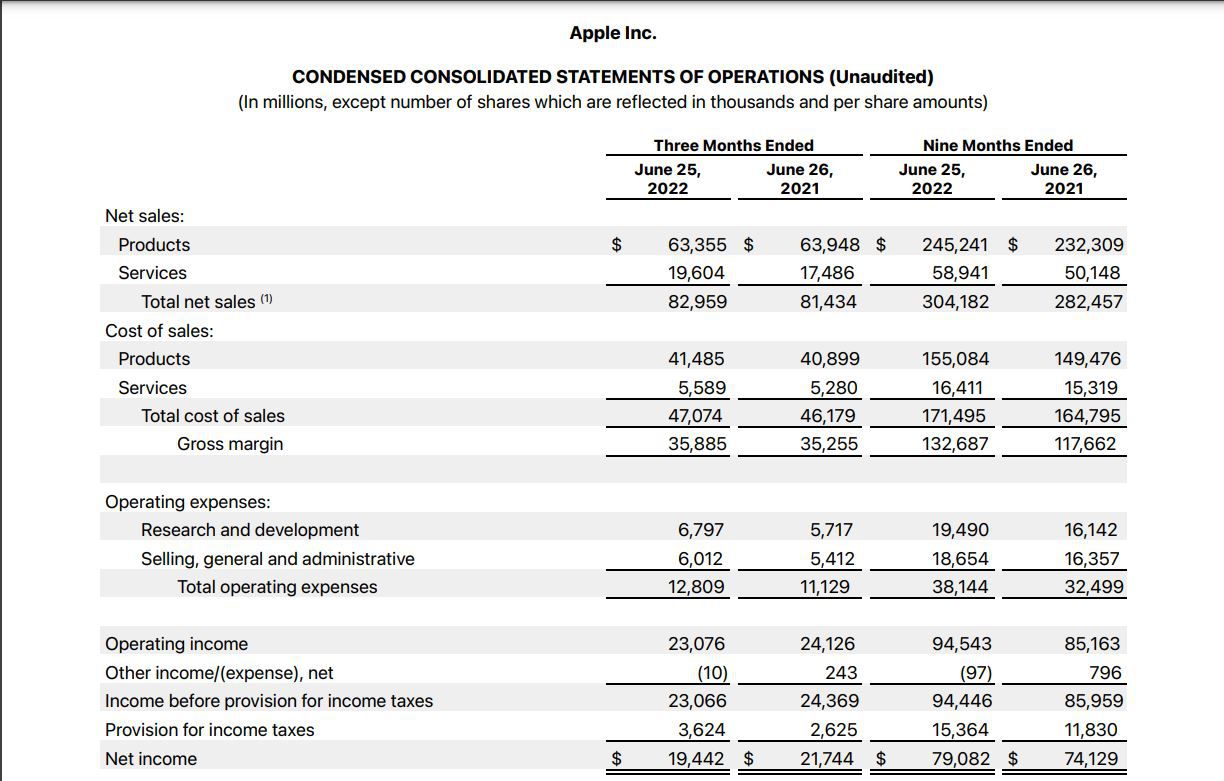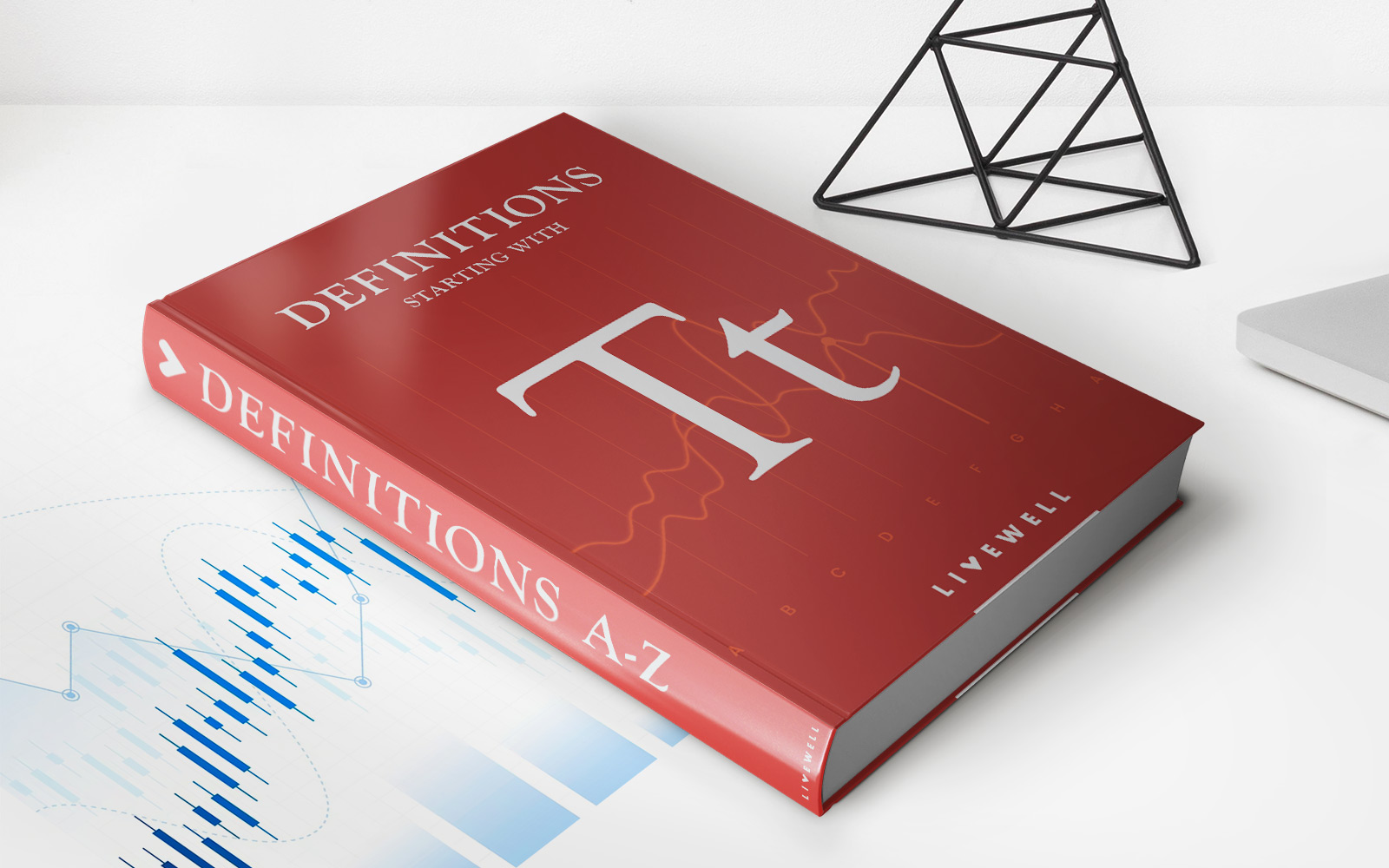

Finance
What Is Trust Accounting Income
Modified: February 21, 2024
Learn about trust accounting income and its importance in finance. Gain insights into how it affects financial reporting and investment decisions.
(Many of the links in this article redirect to a specific reviewed product. Your purchase of these products through affiliate links helps to generate commission for LiveWell, at no extra cost. Learn more)
Table of Contents
Introduction
Trust accounting income is a fundamental concept in the field of finance. It plays a crucial role in determining the income that is distributed to beneficiaries of a trust. Understanding trust accounting income is essential not only for beneficiaries but also for trustees and fiduciaries who are responsible for managing the assets of a trust.
Trusts are legal entities that hold and manage assets for the benefit of specified individuals or organizations, known as beneficiaries. Trust accounting income refers to the income generated by the assets held within a trust. This income can come from various sources, such as interest, dividends, rental income, and capital gains.
Trust accounting income is distinct from taxable income, which is the income subject to taxation by the government. While both concepts are related, trust accounting income focuses specifically on the income available for distribution to the beneficiaries of a trust.
In this article, we will delve into the definition and components of trust accounting income, explain its importance, and discuss how it is calculated and distributed. We will also explore the differences between trust accounting income and taxable income, providing examples to further illustrate the concept.
By the end of this article, you will have a solid understanding of trust accounting income and its significance in managing the financial affairs of a trust. Let’s dive in!
Definition of Trust Accounting Income
Trust accounting income refers to the income generated by the assets held within a trust that is available for distribution to the beneficiaries. It is a crucial concept in trust administration and determines the financial resources that can be allocated to the beneficiaries.
The definition of trust accounting income can vary depending on the governing law and the provisions outlined in the trust agreement. Generally, trust accounting income includes all forms of income that the trust assets generate, such as interest, dividends, rental income, and capital gains.
Trust accounting income is calculated by taking into account both the current income generated by the trust assets and any accumulated income from previous periods. As a result, it reflects not only the readily distributable income but also any undistributed income that has accumulated over time.
It is important to note that trust accounting income is different from taxable income. While taxable income is the income subject to taxation by the government, trust accounting income focuses on the income available for distribution to the beneficiaries of the trust.
Trust accounting income is commonly defined by state laws or the terms of the trust agreement. It is essential for trustees and fiduciaries to have a clear understanding of how trust accounting income is defined in order to fulfill their responsibilities and ensure proper management of the trust assets.
Next, we will explore the components that contribute to the calculation of trust accounting income. Understanding these components is crucial for accurately determining the income available for distribution and making informed financial decisions within the trust.
Components of Trust Accounting Income
Trust accounting income is composed of various components that contribute to its calculation. These components are essential in determining the income available for distribution to the beneficiaries of a trust. Let’s take a closer look at each of these components:
- Interest Income: This component includes any interest earned on investments held within the trust, such as interest from bonds, savings accounts, or certificates of deposit.
- Dividend Income: Dividend income encompasses any distributions received from stocks or mutual funds held within the trust. It is typically derived from companies sharing a portion of their profits with shareholders.
- Rental Income: If the trust owns rental properties, any rental earnings received from tenants form part of the trust accounting income. This can include both residential and commercial rental income.
- Capital Gains: Capital gains occur when the trust sells an asset that has appreciated in value. The difference between the sale price and the purchase price is considered a capital gain and contributes to the trust accounting income.
- Trust Expenses: Trust expenses, such as management fees, legal fees, and maintenance costs, are subtracted from the trust accounting income. These expenses are necessary for the proper administration and maintenance of the trust assets.
These components collectively make up the trust accounting income and determine the financial resources available for distribution to the trust beneficiaries. It is essential for trustees and fiduciaries to accurately calculate these components to ensure proper management and equitable distribution of the trust’s income.
Next, we will explore the importance of trust accounting income in achieving the goals and objectives of a trust.
Importance of Trust Accounting Income
Trust accounting income holds significant importance in the administration of a trust. It serves as a crucial measure for determining the financial resources available for distribution to the beneficiaries. Understanding the importance of trust accounting income helps trustees and beneficiaries effectively manage the assets and achieve the goals of the trust. Here are several key reasons why trust accounting income is essential:
- Beneficiary Support: Trust accounting income directly impacts the financial support provided to the beneficiaries. It ensures that the beneficiaries receive a fair and equitable distribution of income from the trust assets. By accurately calculating and allocating trust accounting income, trustees can fulfill the financial needs of the beneficiaries, supporting their well-being and ensuring their welfare.
- Fiduciary Responsibility: Trustees have a fiduciary duty to act in the best interests of the trust and its beneficiaries. Trust accounting income enables trustees to fulfill this responsibility by providing a clear framework for managing the trust’s financial resources. It ensures that trustees make informed decisions regarding asset allocation, investment strategies, and income distribution.
- Asset Preservation: Trust accounting income helps trustees balance the distribution of income with the preservation of the trust’s assets. By accounting for trust expenses and management fees, trustees can allocate income in a manner that maintains the long-term sustainability of the trust. This ensures that future generations of beneficiaries can benefit from the trust assets.
- Tax Planning: Trust accounting income provides a foundation for effective tax planning. By understanding the income generated within the trust, trustees can make informed decisions regarding tax strategies and minimize the tax burden on both the trust and its beneficiaries. Distinguishing between trust accounting income and taxable income allows trustees to optimize tax efficiency within the legal framework.
- Legal Compliance: Trustees must comply with applicable laws and regulations regarding the distribution of trust income. Trust accounting income serves as a standard for ensuring legal compliance. By accurately calculating and reporting trust accounting income, trustees can meet their legal obligations and maintain transparency in the administration of the trust.
Overall, trust accounting income plays a vital role in managing the financial affairs of a trust. It ensures the equitable distribution of income, supports beneficiary needs, preserves trust assets, and aids in tax planning and legal compliance. Trustees and beneficiaries must have a clear understanding of trust accounting income to effectively fulfill their roles and responsibilities within the trust.
Next, we will explore the calculation and distribution of trust accounting income, providing insights into the process and considerations involved.
Calculation and Distribution of Trust Accounting Income
The calculation and distribution of trust accounting income involve several key steps and considerations. Trustees play a central role in ensuring an accurate calculation and fair distribution of income to the beneficiaries. Let’s explore the process in more detail:
- Identifying Income Sources: Trustees begin by identifying the sources of income generated within the trust, such as interest, dividends, rental income, and capital gains. They collect the necessary documentation and statements to determine the total income earned.
- Accounting for Expenses: Trust expenses, such as management fees, legal fees, and maintenance costs, are deducted from the total income to determine the net income available for distribution. Trustees should maintain detailed records of the expenses incurred to ensure accurate accounting.
- Accumulated Income: Trustees also consider any undistributed income from previous periods. This accumulated income, often referred to as “principal,” is added to the current income to calculate the total trust accounting income available for distribution.
- Applying Distribution Rules: Trusts typically have specific rules outlined in the trust agreement or state laws regarding the distribution of income. Trustees must adhere to these rules when determining the distribution amounts for each beneficiary. This ensures fairness and compliance with the trust’s governing documents.
- Consideration of Beneficiary Needs: Trustees take into account the financial needs and circumstances of the beneficiaries when making distribution decisions. They balance the equitable distribution of income with the specific requirements of each beneficiary, such as education expenses, medical costs, or general support needs.
- Documenting Distribution Decisions: Trustees maintain accurate records of the income calculation, expenses, and distribution decisions. This documentation is essential for transparency, legal compliance, and future reference.
The distribution of trust accounting income can be done on a regular basis, such as annually or quarterly, depending on the terms of the trust. Trustees communicate the distribution amounts to the beneficiaries and coordinate the transfer of funds or assets accordingly.
It is important for trustees to exercise diligence, care, and transparency throughout the calculation and distribution process to ensure the proper management of the trust and meet their fiduciary duties.
In the next section, we will explore the differences between trust accounting income and taxable income, highlighting the nuances and implications of each.
Differences between Trust Accounting Income and Taxable Income
Trust accounting income and taxable income are two distinct concepts, although they are related. Understanding the differences between these two types of income is crucial for trustees, beneficiaries, and tax professionals. Let’s explore the contrasts and implications of each:
Definition: Trust accounting income refers to the income generated by the assets held within a trust that is available for distribution to the trust beneficiaries. Taxable income, on the other hand, is the income that is subject to taxation by the government based on the applicable tax laws and regulations.
Sources of Income: Both trust accounting income and taxable income can include similar sources of income, such as interest, dividends, rental income, and capital gains. However, there may be differences in how certain types of income are treated for tax purposes, leading to variations between trust accounting income and taxable income.
Timing of Recognition: Trust accounting income is typically recognized and calculated based on the income earned by the assets within the trust, regardless of whether it has been distributed to the beneficiaries. On the other hand, taxable income is generally recognized when it is actually received or realized by the trust. This difference in timing can result in variations between trust accounting income and taxable income.
Deductions and Expenses: Trust accounting income may take into account certain expenses and deductions, such as management fees and legal costs, which can reduce the overall income available for distribution to beneficiaries. Taxable income, on the other hand, considers deductions, credits, and allowable expenses that are specific to the tax laws, which can further reduce the tax liability of the trust.
Tax Rates and Treatment: Trusts are subject to specific tax rates and regulations that may differ from individual tax rates. Taxable income is typically subject to progressive tax rates, with higher rates applied to higher income levels. Trust accounting income, on the other hand, may be subject to different tax treatment or have certain exemptions specific to trusts.
Distribution Requirements: Trust accounting income is a crucial factor in determining the income available for distribution to beneficiaries. Trustees must follow the rules and guidelines outlined in the trust agreement regarding the distribution of income. Taxable income, however, does not dictate the timing or amounts of distributions made to beneficiaries.
It is important to note that trust accounting income and taxable income are interconnected, and the management of one can impact the other. Trustees must consider both concepts when making financial decisions within the trust to ensure compliance with tax laws and fulfill their fiduciary duties.
Next, we will provide some examples to further illustrate the calculation of trust accounting income.
Examples of Trust Accounting Income Calculation
Calculating trust accounting income requires careful consideration of the income sources, expenses, and distribution rules specific to the trust. To provide a practical understanding, let’s explore a couple of examples that illustrate the calculation of trust accounting income:
Example 1:
A trust holds a diversified investment portfolio consisting of stocks, bonds, and rental properties. In a given year, the trust generates the following income:
- Interest Income: $10,000
- Dividend Income: $5,000
- Rental Income: $20,000
The trust incurs the following expenses:
- Management Fees: $3,000
- Legal Fees: $1,000
To calculate the trust accounting income, we subtract the expenses from the total income:
Total Trust Income: $10,000 + $5,000 + $20,000 = $35,000
Total Expenses: $3,000 + $1,000 = $4,000
Trust Accounting Income: $35,000 – $4,000 = $31,000
This is the income available for distribution to the trust beneficiaries.
Example 2:
Consider a trust that generates income from a rental property and investments. In a given year, the trust earns the following income:
- Interest Income: $8,000
- Dividend Income: $4,000
- Rental Income: $12,000
The trust has accumulated undistributed income from the previous year, also known as principal, amounting to $10,000.
The trust’s expenses for the year include:
- Management Fees: $2,000
- Maintenance Costs: $1,500
To calculate the trust accounting income, we add the current income to the accumulated income and subtract the expenses:
Total Trust Income: $8,000 + $4,000 + $12,000 = $24,000
Undistributed Income from Previous Year: $10,000
Total Expenses: $2,000 + $1,500 = $3,500
Trust Accounting Income: ($24,000 + $10,000) – $3,500 = $30,500
This is the income available for distribution to the trust beneficiaries, considering both the current income and the accumulated income from the previous year.
These examples provide a glimpse into the calculation of trust accounting income. It is important to note that each trust may have unique provisions and rules governing the calculation and distribution of income. Trustees should refer to the trust agreement and consult with legal and financial professionals to ensure accurate and appropriate income calculations.
Finally, let’s conclude our article by summarizing the key points discussed.
Conclusion
Trust accounting income is a critical concept in the field of finance, particularly for trustees, fiduciaries, and beneficiaries of a trust. It refers to the income generated by the assets held within a trust that is available for distribution to the beneficiaries. Understanding trust accounting income is vital for effectively managing trust assets and achieving the goals of the trust.
In this article, we explored the definition of trust accounting income and its components, including interest income, dividend income, rental income, capital gains, and trust expenses. We also highlighted the importance of trust accounting income in supporting beneficiaries, fulfilling fiduciary responsibilities, preserving trust assets, tax planning, and legal compliance.
We discussed the differences between trust accounting income and taxable income, emphasizing how they are distinct but interconnected concepts. Trust accounting income focuses on the income available for distribution to beneficiaries, while taxable income is subject to taxation by the government.
Furthermore, we provided examples to illustrate the calculation of trust accounting income, showcasing how income sources, expenses, and accumulated income impact the overall calculation. These examples helped to demonstrate the practical application of trust accounting income in real-world scenarios.
It is important for trustees and beneficiaries to have a clear understanding of trust accounting income to ensure proper management, equitable distribution of income, and adherence to legal obligations. Consulting with professionals, such as accountants, lawyers, or trust administrators, can provide further guidance and expertise in navigating the complexities of trust accounting income.
By comprehending trust accounting income and its implications, stakeholders can make informed financial decisions, preserve trust assets, and provide support to beneficiaries according to the trust’s objectives and governing documents.
Overall, trust accounting income is a fundamental concept that facilitates the effective management and distribution of income within a trust. It serves as a vital tool in meeting the financial needs of beneficiaries, safeguarding trust assets, and ensuring compliance with legal and tax requirements.














